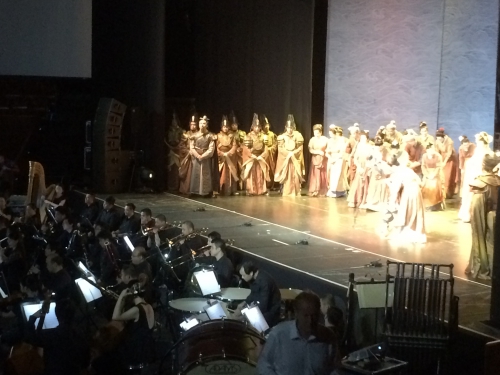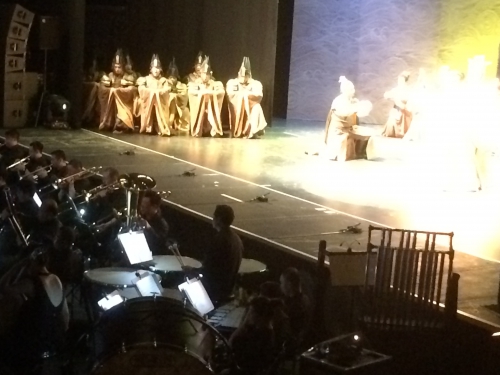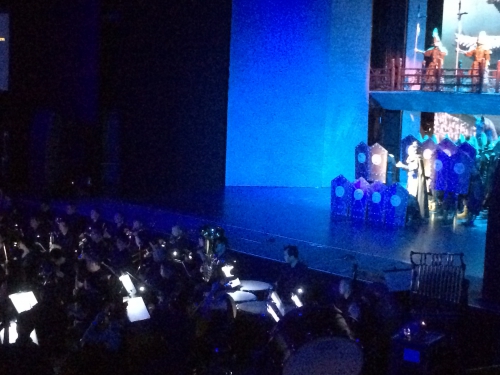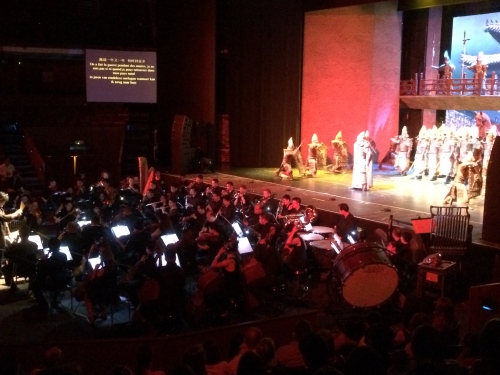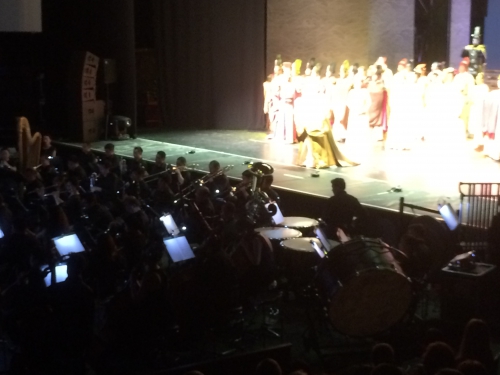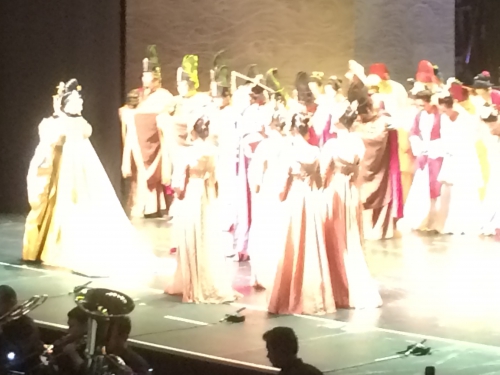The Grand Canal, chinese opera, western style, Brussels, July 7th, Cirque Royal
Western-Style Opera《The Grand Canal》
" 剧情介绍:
本剧以大运河的开掘、通航为经,以隋、唐的朝代更迭为纬,编织出一部回肠荡气、催人警醒,并能够释放出正能量的历史正剧。
隋炀帝为促进交通便利,从大局着眼,决定修一条从南到北的运河。然而征战年年的隋朝民众最需要的却是休养生息。炀帝不顾忠臣劝阻决定修河,繁重的劳役和紧缩的工期令民众不堪重负,最终揭竿而起。隋炀帝被叛军缢杀于江都行宫,唐高祖李渊平定叛乱,迎萧后回朝,安定社稷。
运河之水,沟通了天下之水,给中华民族带来了一千多年的繁荣鼎盛。但以倾国之力修通了大运河的隋炀帝,却因不顾民生的专横暴戾,导致了朝代的倾覆。而李唐政权不仅吸取了隋朝灭亡的教训,认识到“水能载舟,亦能覆舟”的深刻道理,承继了隋炀帝的“宏图伟业”,将大运河的功能发挥到极致,最终缔造了繁荣的“大唐盛世”。大运河,不仅是一条沟通天下,纵横四海的“运输之河”,更是一条承载了国家命运、朝代命运乃至个人命运的“命运之河”。"
"The play revolves around the digging and navigation of the Grand Canal in Sui and Tang Dynasties. As a serious historical drama, it is soul-stirring and can bring the audience positive energy.
To facilitate transportation, Emperor Yang of Sui looked at the big picture and decided to open a new canal that runs from South to North. However, years of war had made the public so fatigued that all they wanted is recuperation. Regardless of ministers’ rejection of the project, Emperor Yang of Sui insisted that the canal shall be built. The heavy workload and tight schedule wore people out and eventually some of them rose up in arms. The rebel army killed Emperor Yang of Sui in his temporary dwelling palace in Jiangdu (another name of Yangzhou). Li Yuan, Emperor Gaozu of Tang, crushed the rebellion, invited Empress Xiao back and brought peace to the country. The world belonged to the Tang Dynasty.
Water from all over the world converged to the canal, bringing prosperity of the Chinese people for over 1,000 years. However, Emperor Yang of Sui exhausted the people and was too overbearing to stabilize the country. By contrast, the Tang Dynasty learned the lesson that “the water that bears the boat is the same that swallows it up” and brought the canal into full swing. Under his rule, the prosperous period of Tang Dynasty began. The great canal is not only a river for transportation, but also a river of destiny that benefited a nation, a dynasty, and numerous individuals."
Ce magnifique et prestigieux opéra relate la construction et l’exploitation du Grand Canal durant les dynasties Sui et Tang (ad 618–690 & 705–907). Pour faciliter les transports en Chine, l’Empereur Yang de la dynastie Sui décida de lancer ce grand projet afin de relier le Nord et le Sud du pays. Cependant, des années de guerre rendirent le peuple chinois si épuisé que la construction du canal s’en ressentit. Néanmoins, l’Empereur resta déterminé à mener ce projet à bien ce qui provoqua sa propre chute. La construction se fit au prix de sacrifices énormes, si bien que le peuple s’insurgea, tua l’Empereur et détruisit son palais, situé à Jiangdu (second nom pour Yangzhou). Li Yuan, l’Empereur Gaodu de la dynastie Tang, réprima la rébellion mais invita néanmoins l’Impératrice Xiao à regagner la capitale et réinstalla la paix. Sous leur autorité,, une période très prospère démarra. Cette dynastie apprit la leçon de ce que “les eaux qui portent un navire sont aussi les mêmes que celles qui l’engloutissent’’ et elle amena le canal à sa pleine utilisation. Le monde appartenait maintenant à la dynastie Tang. Les eaux et les Océans du monde entier convergeaient vers ce canal, amenant prospérité au peuple chinois pendant plus de 1.000 ans.
Le Grand Canal n’est pas qu’une rivière et un moyen de transport, c’est aussi le destin d’une dynastie, d’une nation, d’un peuple…d’hommes et de femmes."
Inscrivez-vous au blog
Soyez prévenu par email des prochaines mises à jour
Rejoignez les 12 autres membres

